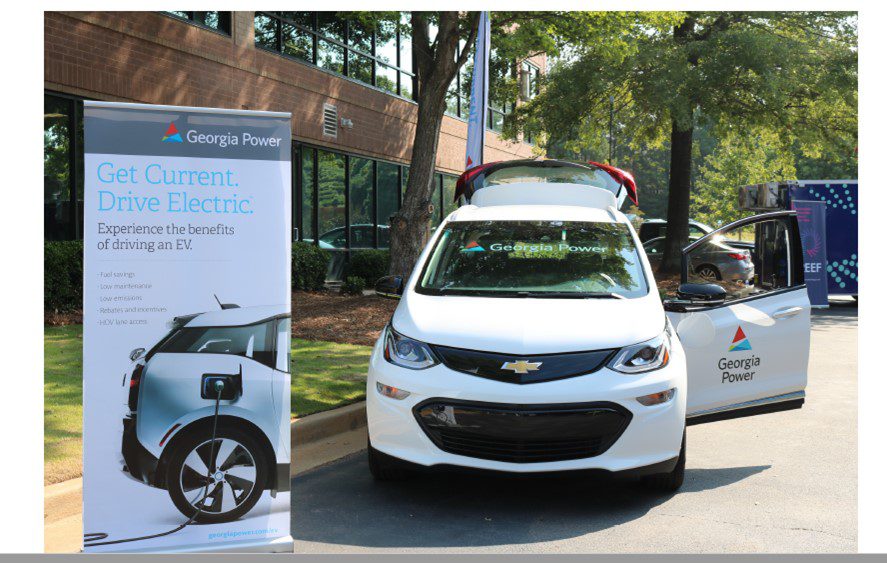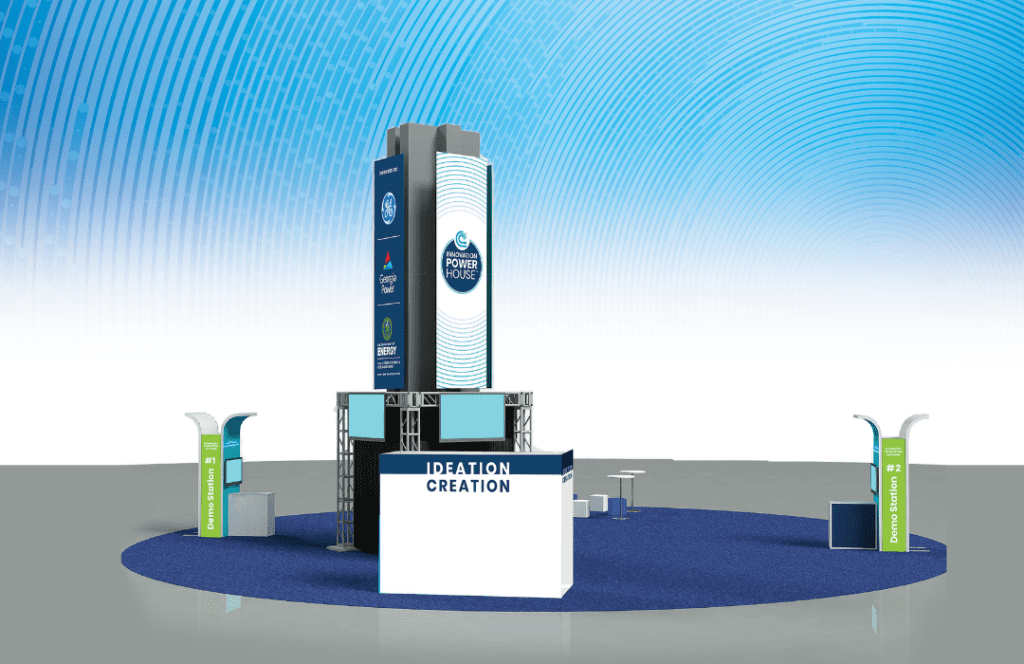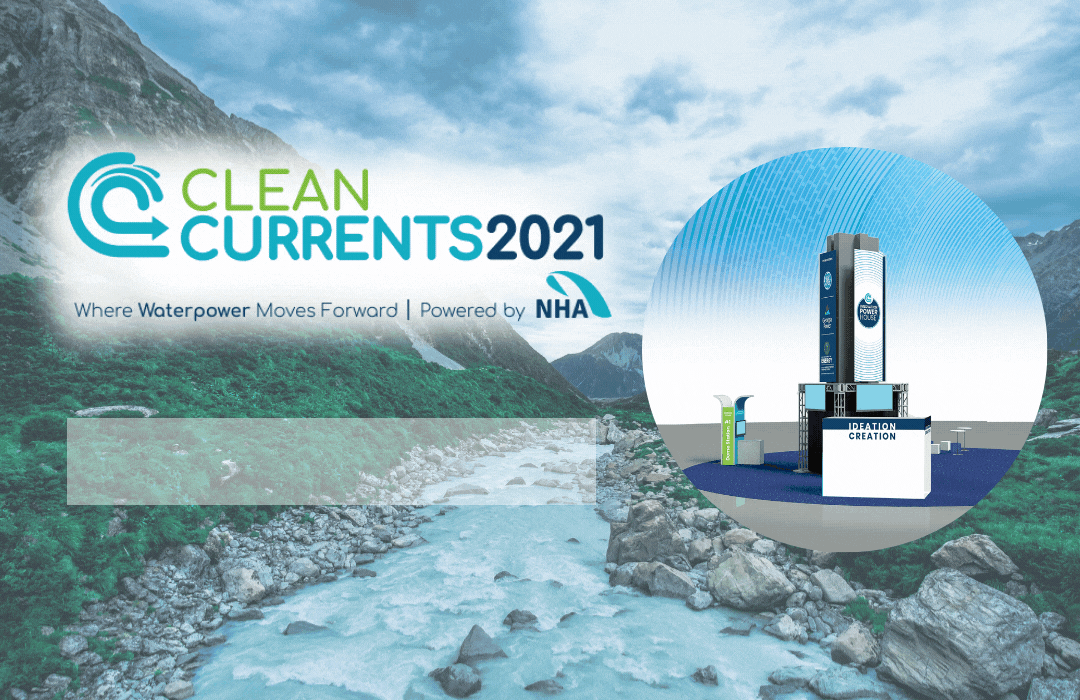The Clean Currents Conference + Tradeshow in Atlanta the week of October 18, 2021, is an exercise in innovation, “firsts”, and moving forward.
- This is the first time ever for this event to occur.
- The event will be the only national in-person conference + tradeshow in the waterpower industry in 2021.
- The exhibitors, sponsors, and attendees – more than 800 people in all – are overcoming pandemic-related obstacles to safely meet, learn from one another, and do business together.
- There are more formats for learning at this event than at any other event in the industry.
- Innovation, leadership, and investment for the future are three themes running throughout the week.
In its inaugural offering of Clean Currents, the National Hydropower Association (NHA) is bringing individuals in all sectors of the waterpower industry together to move the technology forward.
Part of that forward movement involves bringing center stage a focus on innovation.
To accomplish that focus, NHA has partnered with Georgia Power, GE Renewable Energy, and the U.S. Department of Energy to create an Innovation Power House at the event.
This open area in the center of the event … accessible to all attendees – is intended to be a dynamic and engaging epicenter of innovation. More than 20 scientists, researchers, engineers, and innovators will be demonstrating their work, sharing useful tools, offering their ideas of “what’s next” for this industry.
“To effectively compete in today’s electric power industry, all sectors of the waterpower industry urgently need to reduce the costs and the time required to build, rehab, or install,” says Malcolm Woolf, president and CEO of NHA, the owner/organizer of Clean Currents.
“Reducing costs and time means approaching work differently, including applying new tools, technology, and thinking. In the Innovation Power House, attendees will be exposed to all three of these. By the end of the event, we expect attendees’ heads to be swimming with new thoughts and new approaches they can try when they return to their day jobs,” Woolf says.
“I couldn’t agree more,” said Connor Tinen, director of engineering at Eagle Creek Renewable Energy, who speaks at Clean Currents on Wednesday, October 20. “Innovation is essential to maintain the value of our existing assets in a changing world.”
The demonstrators in the Innovation Power House will share a variety of ideas for reducing costs and/or risks, improving revenue and/or flexibility, and giving the people in the industry tools to work smarter instead of harder.
Demonstrations in the Innovation Power House center around:
- Tools to help people work more efficiently, safely, and productively
- Manufacturing innovations
- Technologies and innovations for employee training
- New releases and launches
- Technologies that inspire and excite
Tools to help people work more efficiently, safely, and productively
Featured in the Power House are a variety of tools attendees will see, touch, and interact with. From a telepresence robot to a head-worn, hands-free helmet that is voice controlled for field workers, the tools being demonstrated could be applied in a variety of situations.
Other demonstrations will get intellectual juices flowing, including:
- An idea for a water-jet drilling robot that can secure a steel dam in tension
- Use of machine learning and artificial intelligence to make mechanical infrastructure capable of repairing, rebuilding, and upgrading itself
- An idea for a new type of low-cost coating to prevent rust on metal surfaces
Several of the tools have to do with solving challenges involving sediments in reservoirs. For example, one scientist is sharing an innovative idea of how to eliminate methane trapped in sediments in a reservoir. The liquid piston turbo dredger is a deep water internal combustion system that collects and burns biomethane emissions trapped in sediments or uses external natural gas to dredge sediments from a depth of 50 to 200 feet using the principle of the oscillating column.
The system is installed in concrete vaults or near the plunge pool and can be turned on and off as needed without needing expensive mobilization and demobilization and would be superior to electric system in the presence of methane pockets.
Other sediment-related ideas include:
- An air bubble-driven pumping system to raise sediment from the bottom of a reservoir so it can be barged away
- An innovative method of transports gravel and sediments following dredging. The method would reduce water consumption by more than 50 percent and eliminate abrasion of pipes and pumps.
Some of the exchanges in the Power House are designed to make attendees aware of existing software, databases, and online forums available for use that they may not know about.
Those include:
- Waterpower Research Portal (WaRP) – a living database of completed and ongoing research within the hydropower, pumped storage and marine energy sectors, conducted by industry, government, NGO and educational entities.
- International Generator Technical Community, IGTC — an online technical forum, with the mission of facilitating connection of technical information and enabling equal access to industry-specific content for all industry professionals. Discussions within the forum focus on efforts to service, maintain, and improve the reliability of electric generators and other power plant technologies, including steam, gas and hydraulic turbines, and other major and balance of plant systems.
- Marine Energy Atlas – a tool for marine energy developers to find and review data on U.S. wave resources; tidal, ocean, and riverine current resources; and ocean thermal resources. The array of unique data sets can be used for everything from project siting to device design.
And, in a couple of cases, asset owners are sharing what’s working for them to solve real-life challenges, with the idea that others don’t have to reinvent a new wheel to solve the same challenges.
Examples:
- The U.S. Army Corps of Engineers is sharing what they’ve discovered about technologies for abatement of zebra and quagga mussels
- Georgia Power is demonstrating its new LakeWorks app, which is allowing Georgia Power’s Shoreline Management Team to track online permit applications and review and inspect the applications, as well as integrate with Georgia Power’s own Land Information Management System
- Southern Company is showcasing several UAVs (drones) it uses throughout its system and is sharing what the teams are learning
Manufacturing Innovations
These innovations are all about reducing costs.
One focus is on the adaptation of additive technologies (think three-dimensional printing) to make metal, plastic, or concrete parts more efficiently and with less material.
Another demonstration shares an idea for a new casting process for turbine blades.
Technologies and Innovations for Employee Training
Two interesting “out of the box”-type training tools are featured:
- Virtual Reality Simulations – a proven effective training tool for customer service, sales, leadership, and diversity, equity and inclusion. The demonstration will focus on potential applications for hydro in terms of stakeholder engagement.
- Gaming – playing games is a fun and effective way to teach. One game being featured at Clean Currents is “CRISIS” – a board game developed for use in cybersecurity-related training to amplify situational awareness.
New Releases and Launches
On Thursday, October 21, the U.S. Department of Energy will officially launch its new Pumped Storage Hydro (PSH) Valuation Tool.
Building on the Pumped Storage Hydro (PSH) Valuation Guidebook recently released by DOE’s Water Power Technologies Office, the Pacific Northwest National Laboratory and the Argonne National Laboratory have developed a web-based tool to walk users through the 13-step methodology to establish the value of a pumped storage hydro project.
Technologies that Inspire and Excite
Electric Vehicles and Nanobubbles. The connection to waterpower may not seem direct, yet these are two technologies to excite attendees.
Georgia Power Company, host utility of Clean Currents, is preparing customers for the transition to electric vehicle (EV) technologies and charging infrastructure. They are bringing a Kia Niro to the event and will be sharing the utility’s cutting-edge work in electric transportation.
For hydro, the electrification of the transportation sector brings one certainty – the more use of electricity, the more the need for hydropower.

Nanobubbles are ultrafine bubbles (typically have a diameter of about 100 nm and exist in most natural aqueous solutions due to agitation and cosmic radiation) that are “visible” because of advanced nano-scale measuring techniques.
The scientific community has recently begun investigating the potential benefits of nanobubbles in a myriad of water-related applications as a potential alternative to traditional chemical treatments.
Alden Research Laboratory has been working on multiple research and development ideas for the use of nanobubbles. These include a floating aeration nozzle that can be used in the treatment of aquaculture ponds to reduce or eliminate cyanobacteria and other fouling algae that have been a serious issue for this industry. In addition, Alden has designed, developed, and is currently testing a nanobubble generating nozzle that can be used on garden hoses. This will allow consumers to produce nanobubbles without the use of any special equipment (i.e. pumps and compressors).
Ideation Creation
Another feature in the Innovation Power House is a big white structure. At the start of the event, the structure will be blank – like a big sheet of blank paper. Throughout the event, attendees will write, draw, doodle, and create on this board … to get their ideas for next-generation research, development and deployment “down on paper.”

NHA will then share these ideas coming out the event with government and industry to jumpstart ideas of what’s needed in research, development, and deployment.
“After literally years of work on the launching of Clean Currents, we at NHA are excited to lead the industry in this crucial focus on sharing and learning to move waterpower forward,” Woolf concludes.











